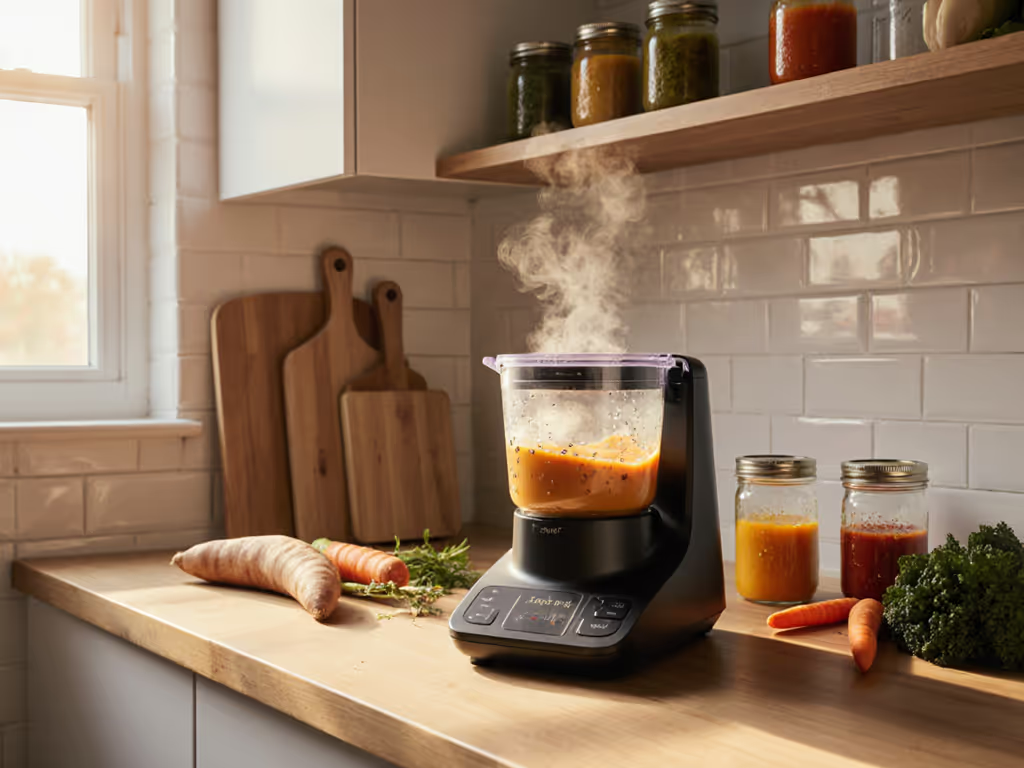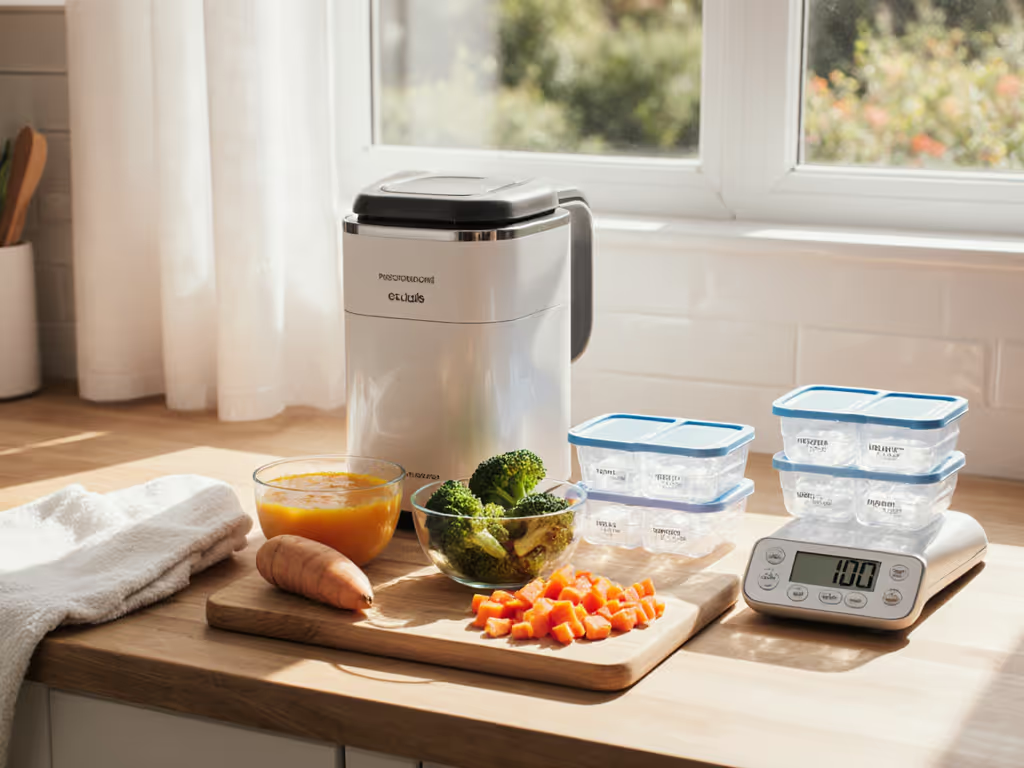
Portable Baby Food Makers: Complete Guide for Parents
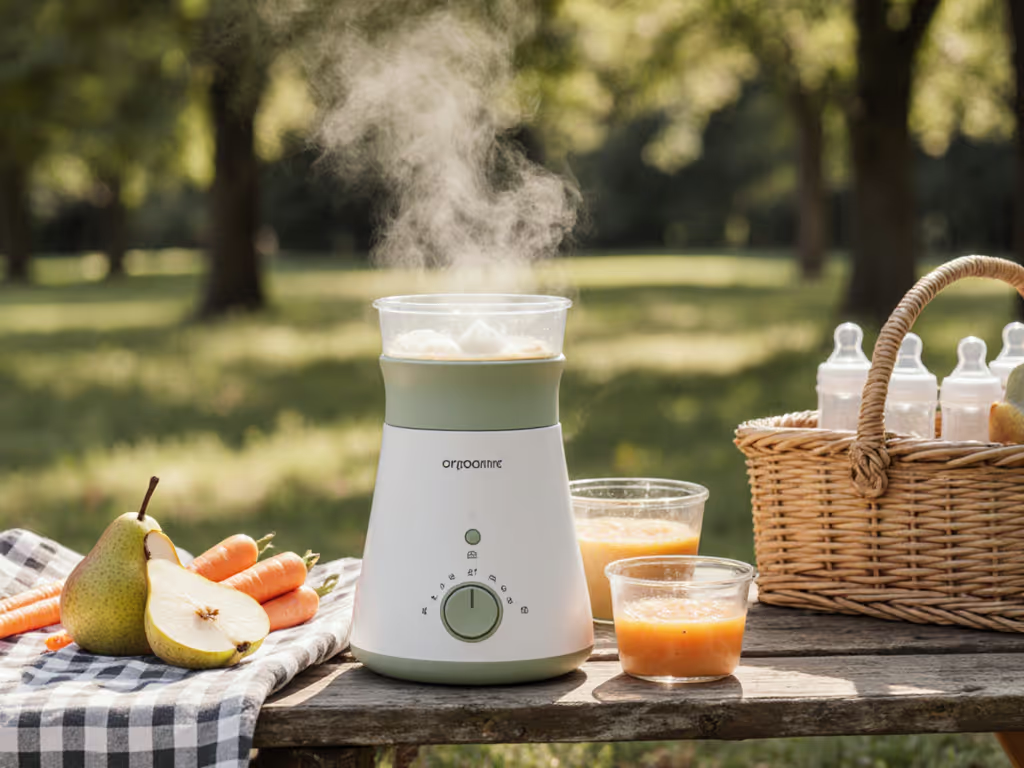
Did you know that 82 percent of parents rank easy cleaning as their top priority when choosing a baby food maker? With meal prep taking up so much time, finding efficient ways to serve fresh, healthy foods becomes a real challenge for busy families. Modern portable baby food makers offer a smart solution, letting parents create nutritious, homemade baby meals with less effort, better ingredient control, and the flexibility to fit any schedule or kitchen space.
Key Takeaways
| Point | Details |
|---|---|
| Convenience | Portable baby food makers simplify meal preparation by combining steaming and blending into one device. |
| Nutritional Control | Parents can select fresh ingredients, ensuring healthy, homemade meals tailored to their infant's needs. |
| Variety of Options | Different models cater to specific preferences, from electric steam and blend to manual and travel options. |
| Cleaning and Maintenance | Regular cleaning and safety checks are essential to maintain hygiene and performance of the device. |
Defining Portable Baby Food Makers and Uses
Portable baby food makers are compact, multifunctional kitchen appliances designed to simplify infant meal preparation for modern parents. These innovative devices combine steaming, blending, and cooking capabilities into a single streamlined tool, transforming whole ingredients into nutritious baby meals within minutes.
These specialized appliances offer parents significant advantages in meal preparation:
- Quick Preparation: Complete baby food processing in 15-20 minutes
- Nutrition Preservation: Steam-cook ingredients to retain maximum vitamins and minerals
- Texture Control: Customize food consistency from smooth purees to chunkier textures
- Space Efficiency: Compact design ideal for small kitchens or travel
Beyond convenience, portable baby food makers support healthy eating practices by enabling parents to control ingredient quality. Parents can select fresh, organic produce, customize meals for specific dietary needs, and avoid processed commercial baby foods. This approach supports allergen management, portion control, and introduces babies to diverse flavors and nutritional profiles.
The core functionality of these devices revolves around simplifying homemade baby food preparation. By integrating cooking and blending processes, they eliminate multiple kitchen steps, save considerable time, and provide parents a reliable method for creating nutritious meals tailored precisely to their infant's developmental stage and nutritional requirements.
Key Types and Differences Explained
Portable baby food makers are not a one-size-fits-all solution, with different models catering to specific parental needs and preferences. Electric steam and blend models represent the most technologically advanced category, featuring powerful motors (300W+) and comprehensive food preparation capabilities that integrate multiple kitchen functions into a single device.
These baby food makers can be categorized into three primary types:
- Electric Steam and Blend Models: High-powered units with automated steaming and blending functions, offering precise temperature control and consistent food texture
- Manual Multifunctional Units: Non-electric devices with modular designs enabling manual food processing like juicing, straining, grating, and mashing
- Compact Travel Models: Lightweight, battery-operated devices designed for on-the-go meal preparation with minimal kitchen infrastructure
Key differentiating factors among these types include technical specifications such as motor power, blade quality (316-grade stainless steel recommended), noise levels (preferably under 65 dB), and safety certifications. Premium models often feature heat-resistant borosilicate glass containers, FDA and CE safety approvals, and advanced functionality like multiple speed settings and precise texture control.
The choice between these types depends on individual family needs, kitchen space, travel frequency, and desired level of technological sophistication.
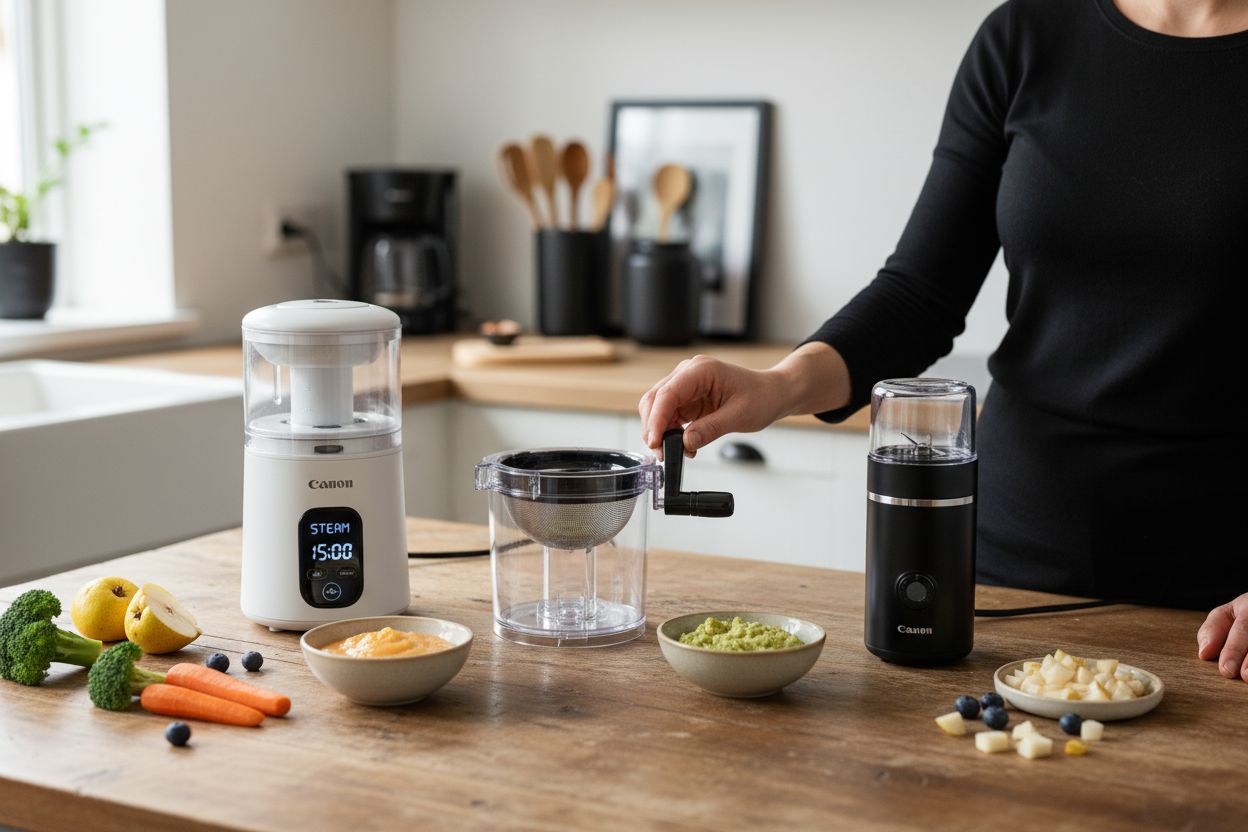 Parents should consider factors like power source, noise level, ease of cleaning, and additional features when selecting the most appropriate portable baby food maker for their specific lifestyle and infant nutrition requirements.
Parents should consider factors like power source, noise level, ease of cleaning, and additional features when selecting the most appropriate portable baby food maker for their specific lifestyle and infant nutrition requirements.
Here's a comparison of the main types of portable baby food makers:
![]()
| Type | Power Source | Key Functions | Best For |
|---|---|---|---|
| Electric Steam & Blend | Electric outlet | Steam<br>Blend<br>Auto processes | Home use<br>Batch prep<br>Precision |
| Manual Multifunctional | Manual (hand) | Mash<br>Juice<br>Grate<br>Strain | Travel<br>Simple meals<br>Low-tech |
| Compact Travel Model | Battery/USB | Blend<br>Light steam (some) | Travel<br>On-the-go meals |
Essential Features for Parents to Consider
Selecting the right portable baby food maker requires careful evaluation of several critical features that directly impact functionality, safety, and long-term usability. Device capacity stands as a primary consideration, with most parents preferring models offering 5-7 cup volumes to support batch meal preparation and reduce overall kitchen time.
Crucial features parents should prioritize include:
- Safety Certifications: FDA, CE, LFGB, RoHS approval ensuring material and manufacturing standards
- Construction Quality: Borosilicate glass containers and 316-grade stainless-steel blades
- Battery Performance: Minimum 30-minute runtime per charge
- Cleaning Mechanism: One-touch cleaning designs and dishwasher-safe components
- Control Interface: Intuitive single-button or digital control systems
Modern portable baby food makers increasingly emphasize advanced charging technologies like USB-C connectivity and comprehensive warranty programs. Parents overwhelmingly value devices offering simple maintenance, with 82% ranking cleaning ease as a top purchase criterion. Additional sophisticated features like multiple speed settings, precise temperature control, and noise reduction (under 65 dB) further distinguish premium models.
Ultimately, the ideal portable baby food maker balances technical sophistication with practical usability. Parents should evaluate their specific lifestyle needs—kitchen space, travel frequency, and infant nutritional requirements—when selecting a device that provides reliable, efficient, and safe meal preparation capabilities.
How Portable Models Work and Operate
Portable baby food makers function through a streamlined, user-friendly process designed to transform raw ingredients into nutritionally balanced infant meals with minimal effort. Meal preparation typically begins with selecting and preparing fresh ingredients, which are cut into small, uniform cubes to ensure consistent cooking and blending results.
The standard operating sequence involves several key steps:
- Ingredient Preparation: Cut fruits, vegetables, and proteins into small (1/2 inch) cubes
- Water Reservoir Filling: Add appropriate water volume to dedicated steaming tank
- Component Assembly: Lock blending jar and steaming container into position
- Mode Selection: Choose steam duration and blending intensity based on ingredient type
- Automatic Processing: Machine steams ingredients, then automatically transitions to blending
Most portable models utilize a two-stage mechanism with separate water tanks and blending containers. The first stage involves steaming ingredients using controlled temperature settings to preserve nutritional content, while the second stage transforms steamed ingredients into smooth, consistent purees. Advanced safety features like sealed lids, automatic shut-off, and detachable components ensure reliable and hygienic food preparation.
Modern devices offer increasingly sophisticated controls, allowing parents to customize texture, monitor cooking progress, and create meals tailored to their infant's developmental stage. By integrating steaming and blending functions into a single compact device, these appliances dramatically simplify homemade baby food preparation, making nutritious, fresh meals more accessible for busy parents.
Cleaning, Maintenance, and Safety Guidelines
Proper maintenance of portable baby food makers is crucial for ensuring device longevity, food safety, and optimal performance. Cleaning protocols should be integrated into your routine immediately after each use to prevent bacterial growth and mineral buildup that could compromise food quality and device functionality.
Key cleaning and maintenance steps include:
- Immediate Cleaning: Disassemble and clean food-contact parts after each use
- Dishwasher Compatibility: Verify which components are dishwasher-safe
- Water Tank Care: Descale steam tanks every 4 weeks using vinegar or citric acid
- Blade Maintenance: Clean blades carefully, avoiding direct water immersion of electronic units
- Drying Process: Thoroughly air dry all components before reassembly
Safety guidelines extend beyond routine cleaning. Parents should always unplug the device before maintenance, inspect components for wear or damage regularly, and follow manufacturer-specific instructions. A recommended descaling process involves soaking removable parts in a vinegar-water solution overnight, followed by a complete rinse and empty steam cycle to eliminate mineral deposits and potential bacterial residue.
Additional safety considerations include storing the device in a cool, dry location away from children's reach, checking electrical cords for damage before each use, and replacing components showing signs of wear. By implementing consistent cleaning and maintenance practices, parents can ensure their portable baby food makers remain hygienic, functional, and safe for preparing nutritious infant meals.
Comparing Portable Makers and Alternative Options
Parents exploring infant meal preparation have multiple options beyond portable baby food makers, each with unique advantages and limitations. Specialized appliances represent just one approach to creating nutritious infant meals, with traditional methods and alternative technologies offering complementary solutions for different family needs and lifestyles.
Comparative options for baby food preparation include:
- Traditional Blender/Food Processor: Affordable but requires manual monitoring and multiple kitchen steps
- Manual Mashing Tools: Low-cost, simple method with limited texture control
- Commercial Baby Food: Convenient but potentially less nutritionally diverse and more expensive long-term
- Portable Baby Food Makers: Most comprehensive, integrated solution with automated processing
- Immersion Blenders: Versatile but lack dedicated steaming capabilities
Portable baby food makers distinguish themselves through integrated design, offering simultaneous steaming and blending functionalities that standalone appliances cannot match. While traditional methods might save initial purchase costs, specialized baby food makers provide significant time savings, consistent nutritional preparation, and precise texture control that manual approaches cannot replicate.
Ultimately, the ideal solution depends on individual family dynamics, including budget, time availability, kitchen space, and personal cooking preferences. Parents should consider factors like cleanup complexity, preparation time, nutritional consistency, and long-term cost-effectiveness when selecting their preferred infant meal preparation method. Portable baby food makers represent a technologically advanced compromise, balancing convenience, nutrition, and efficiency for modern parenting challenges.
Make Mealtime Simpler and Healthier for Your Baby
If you have ever felt overwhelmed by the time and effort it takes to prepare nutritious meals for your baby, you are not alone. The article "Portable Baby Food Makers: Complete Guide for Parents" explores real challenges such as managing noise levels during naptime, maintaining nutrition, ensuring safety, and minimizing clean-up. Parents want peace of mind, knowing their appliance is easy to use, fast, and keeps every meal as healthy as possible for their little one. Whether you are looking for a quiet machine that will not disturb your baby, an easy-to-clean option, or guidance on which features really matter, the search can feel endless.
Break the cycle of uncertainty by relying on expert knowledge. At Parent Kitchen Lab, you will find unbiased product reviews, comprehensive buying guides, and side-by-side comparisons that address the exact concerns highlighted in the guide. Discover which baby food makers stand out for low noise, single-handed use, and safety certified materials. Do not wait to improve your family's mealtime routine. Visit Parent Kitchen Lab’s homepage now and choose the right portable baby food maker to create fast, safe, and wholesome meals for your baby today.
Frequently Asked Questions
What are portable baby food makers?
Portable baby food makers are compact kitchen appliances that combine steaming, blending, and cooking functionalities to prepare nutritious meals for infants quickly and easily.
How do I choose the right portable baby food maker for my needs?
Consider factors like power source, capacity, noise level, ease of cleaning, and additional features such as safety certifications, multiple speed settings, and control interfaces when selecting a model that suits your lifestyle.
What are the main types of portable baby food makers available?
The three primary types are Electric Steam and Blend models, Manual Multifunctional units, and Compact Travel models, each serving different parental needs and preferences.
How do I clean and maintain my portable baby food maker?
Disassemble and clean food-contact parts immediately after use, check for dishwasher compatibility, descale steam tanks regularly, and ensure blades are cleaned without immersing electrical components in water. Maintain proper hygiene and safety by inspecting for wear and following manufacturer guidelines.
Recommended
Related Articles

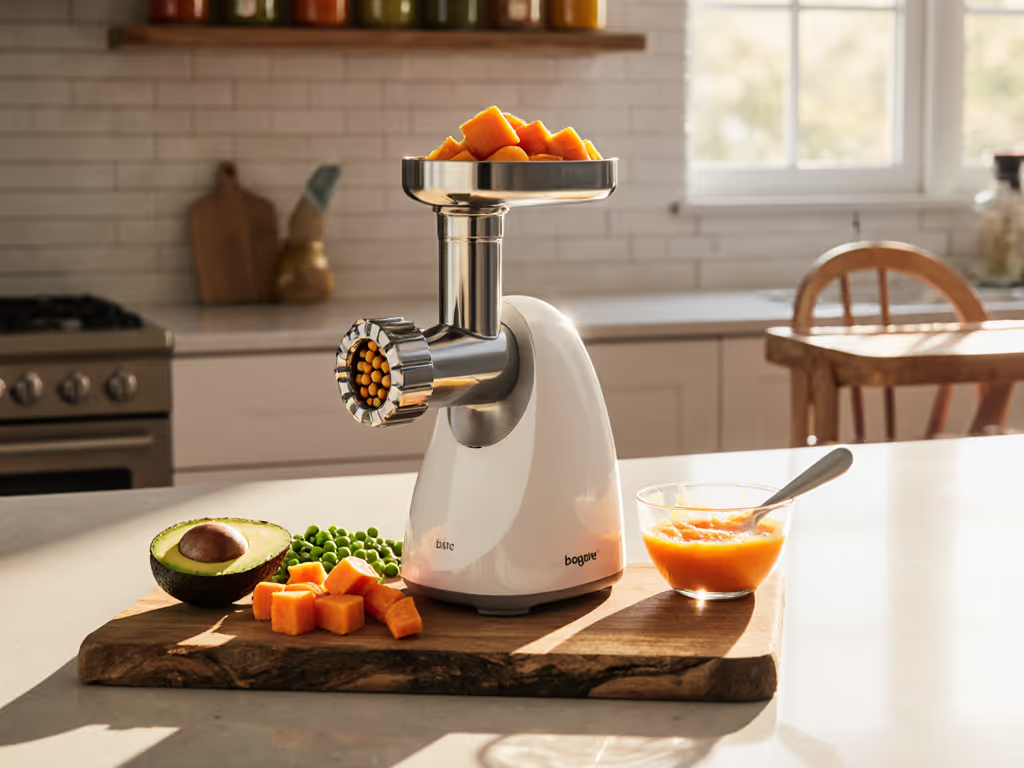
Baby Food Mill Explained: Features, Types, and Benefits
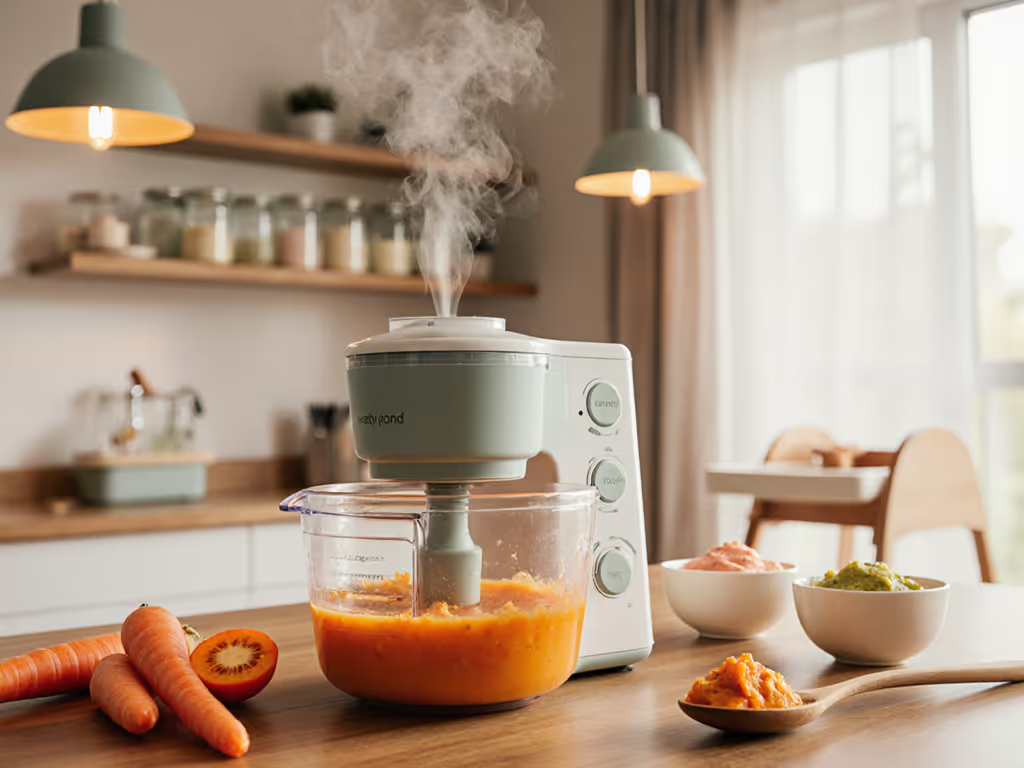
7 Must-Have Features in a Baby Food Maker for Parents
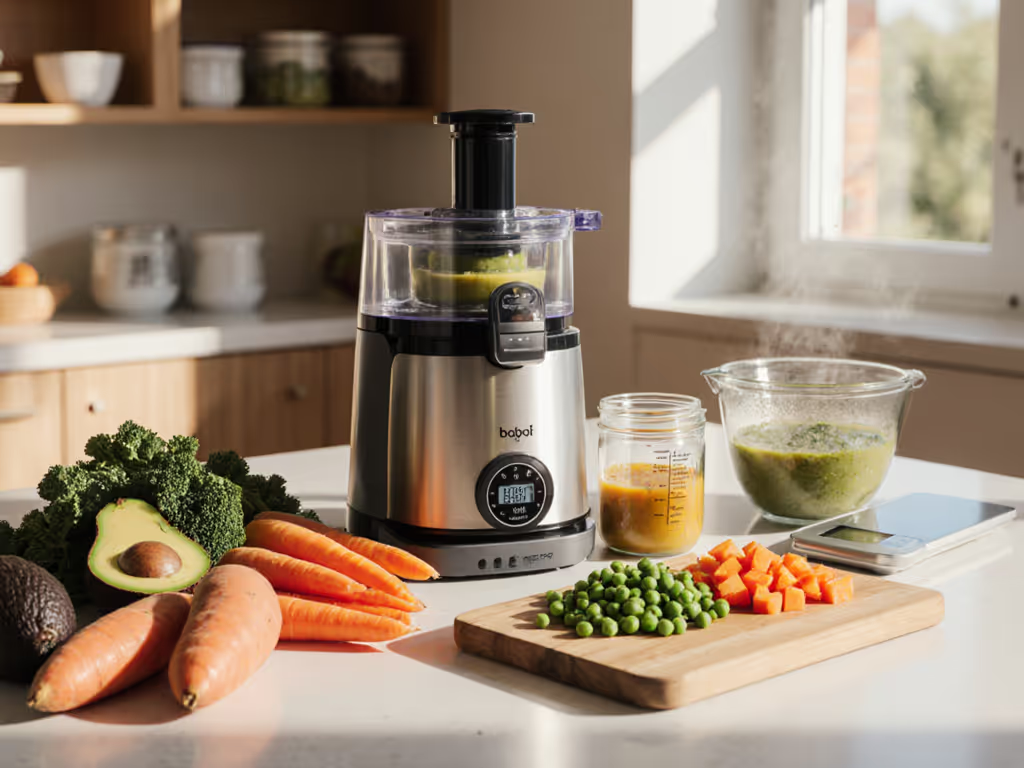
Master the Baby Food Preparation Process at Home
